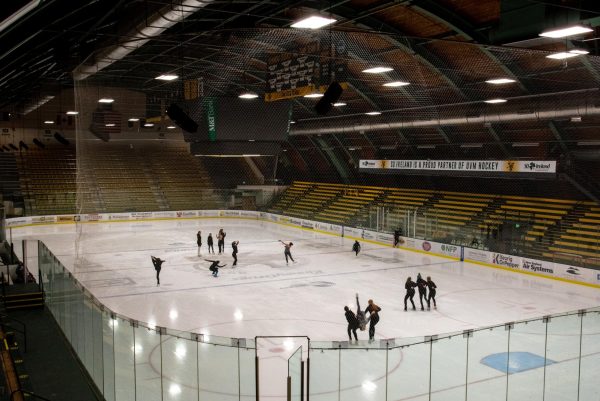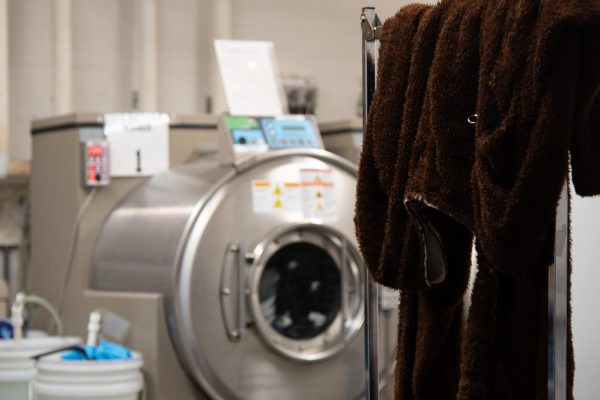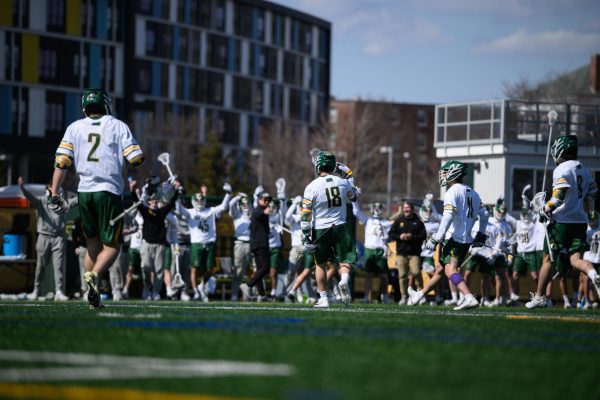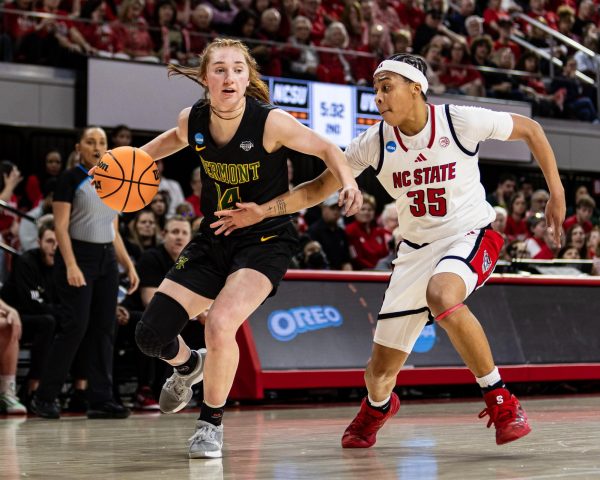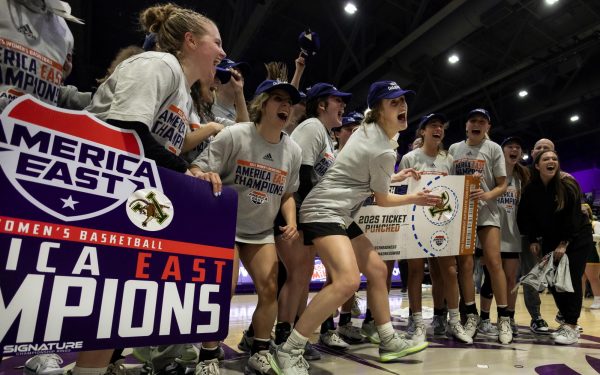The next step
This hockey season was one for the record books.
After waiting 13 years, the green and gold made their way back to the Frozen Four and, judging from the groundwork that has been laid, fans will not have to wait long for another trip.
The Cats may not go back to the Frozen Four next season, but they will surely compete for the Hockey East title and a spot in the NCAA Tournament.
It will not be easy with the departure of seniors Dean Strong, Peter Lenes and Corey Carlson — not to mention junior Viktor Stalberg who signed an NHL contract this week.
These are players that cannot be replaced easily.
However, the team was very young this season and the experiences of playing a full schedule of Hockey East — arguably the toughest conference in all of college hockey — not to mention advancing to the Frozen Four, will set the team up for success in the coming years.
New players will have to step up to fill the leadership and scoring voids left by Strong and Stalberg, but the team did not win 22 games this season relying solely on a few players.
Getting defensive
In Stalberg, Strong, Lenes and Carlson, the Cats will lose 51 goals and 69 assists and, while players like Brian Roloff, Justin Milo and Colin Vock will pick up some of the scoring, the team will need to rely heavily on their defense.
It is a good thing then that the Cats will not lose any of their six starting defensemen — four of whom are sophomores this year — or their starting goalie, Rob Madore.
After splitting time with junior Mike Spillane for part of the season, Madore took the reins and was a vital part of the Cats’ deep run in the NCAA Tournament. In order for the Cats to be successful, he will have to continue, and improve on, his stellar play.
While Patrick Cullity will most likely be the core of the defense as the lone senior, the most important pairing may turn out to be freshman Drew MacKenzie and sophomore Dan Lawson. Both had a spectacular end to the season and were the most consistent at the back for the Cats.
Lawson showed an ability to jump into the attack as well as presenting a physically formidable presence at the blue line.
Putting the puck in the net
Going into the season, head coach Kevin Sneddon’s biggest question mark may be where his team’s scoring will come from.
Without Stalberg, there is no imposing force that will really attract the attention of the defense and run the power play, but that is where Roloff, Vock and Milo, all a year older and wiser, come in.
These three have demonstrated that they can find the back of the net and while they each must improve their output, more than points from each is not too much a stretch.
Matt Marshall could be another key. The freshman saw limited playing time this season but will surely center one of the top lines next season.
Beyond scoring, a major offensive question will be who can replace Strong, who never missed a game in his four years at Vermont and was one of the best two-way forwards in the country.
Near the end of the season, junior Wahs Stacey began to take up the role as the main shotblocker and defensive forward, but it is yet to be seen whether he can be as effective as a leader and face off winner as Strong.
Keeping things rolling
It is a given that the team will be different on offense, but with the experience gained from this season, they will be in great shape to perform.
Unlike in the past, the Cats seem to have moved past the peaks and valleys.
They built a solid foundation under the watchful eyes of Sneddon and it does not seem like there will be a drop off in the near future.
Part of that future involves another Stalberg. Viktor’s brother Sebastian has been reported as one of the members of the class of 2013.
Until there is an official announcement, Sneddon cannot comment on future recruits, but according to Chris Heisenberg’s recruiting Web site, Stalberg will be joined in Burlington by defensemen Anders Franzon, Ben Albertson and Tobias Nilsson-Roos.
While these players will see varying amounts of playing time, the consistency of the class represents the future direction of the program — up.


